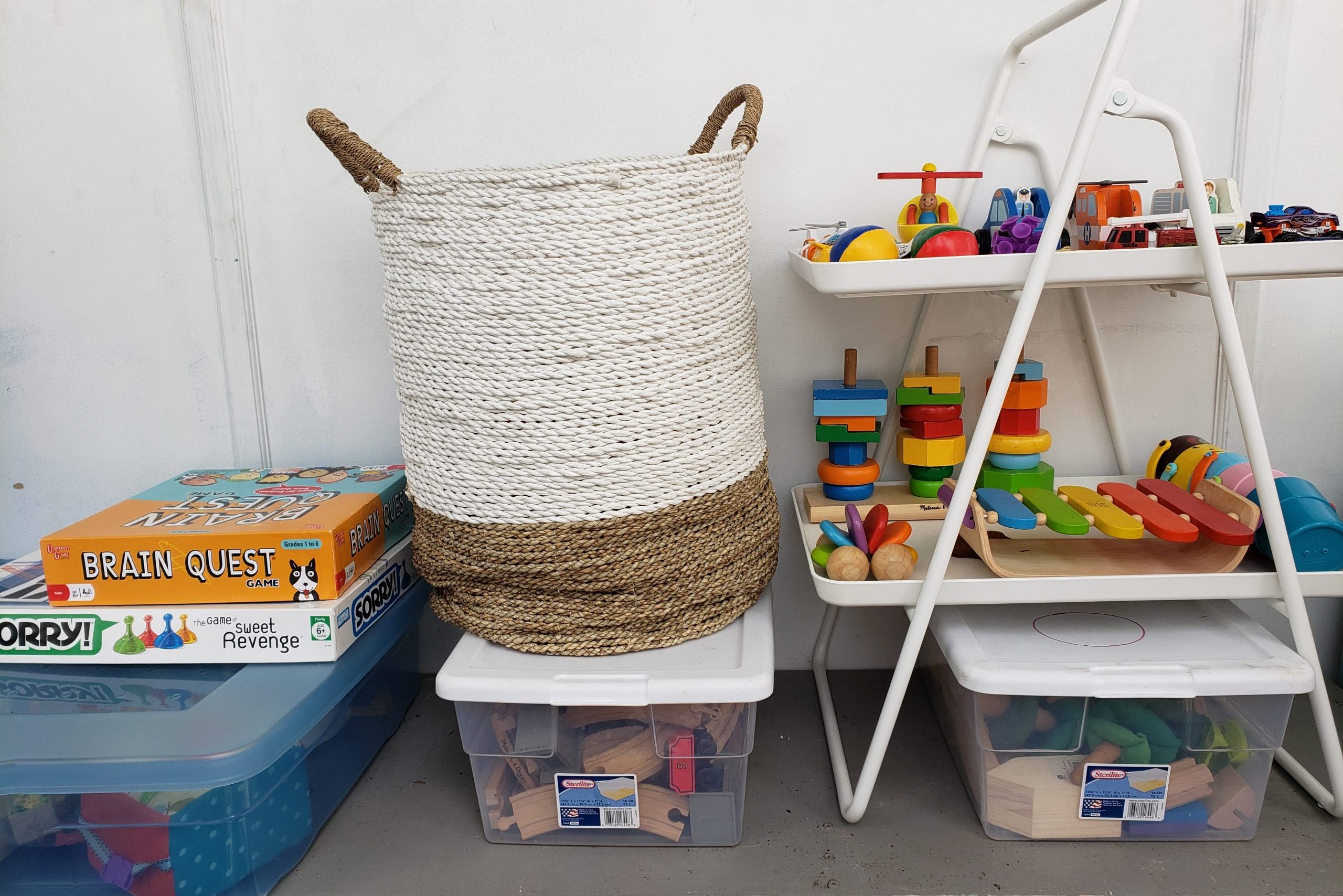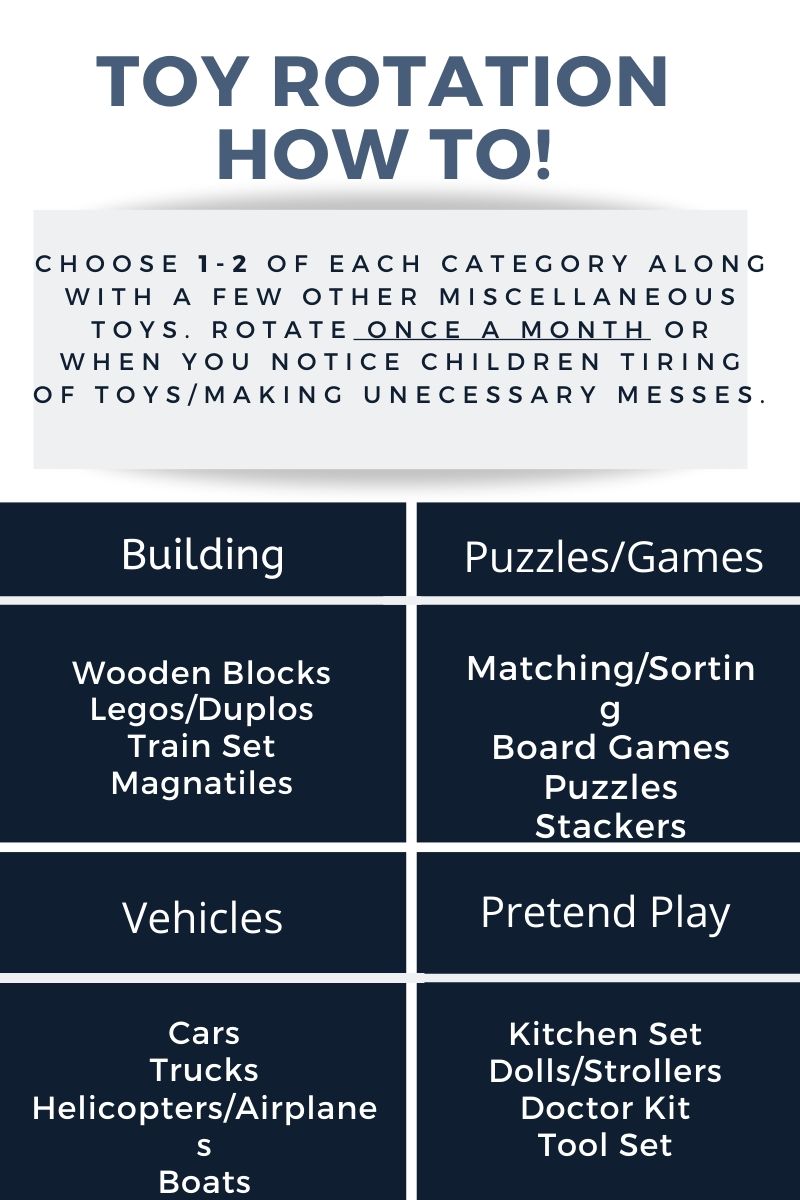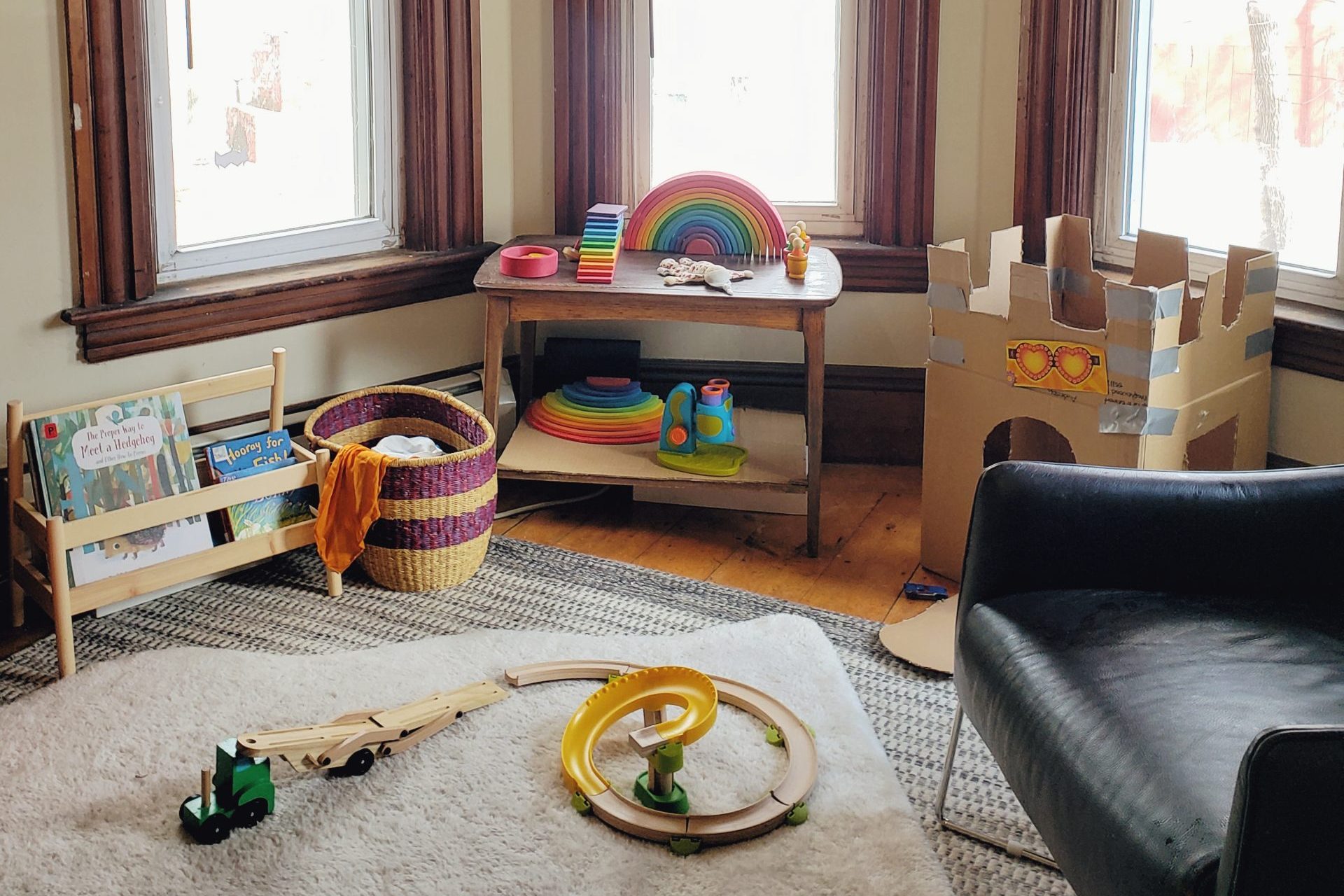Do you ever feel overwhelmed by the number of toys in your home? Or that no matter how many new and fun toys you get, your children seem to tire of them quickly and claim they’re bored? Now that we’re home more than ever due to COVID-19, it’s tempting to bring out every toy, craft, and game we own in the hopes that it will keep our kids entertained. But the thing is, too many toys can actually lead to boredom and overwhelm for our children.
Luckily the solution is simple: less stuff.
Fewer choices create less confusion and longer creative play. By using an easy toy rotation you can create a calmer, more inviting play area for your children while also saving money on toys and your home from total toy disaster.
What is toy rotation?
Instead of having every toy you own accessible — even if sensibly organized into bins — you divide your toys into smaller groups, only allowing for a portion of toys to be out in your living space, available for play, at one time. The rest of the toys are placed away into storage (a closet, a basement, an attic). It’s ideal to keep toys in clear bins so you can easily see what is inside, but I tend to use whatever we have available: bins, baskets, and trays. I typically switch our toys out once per month, after my children are in bed, allowing me to select toys without any fuss.

Why rotate toys?
Simplifying the toys available for our children to play with does two great things: 1) eliminates clutter and mess in our homes and 2) helps children develop more creativity and longevity with the toys available. Just as we parents can feel daunted and overwhelmed by the sheer amount of toys out in our homes, our children can also feel overwhelmed by the selection, jumping from one toy to the next (thus creating less focus and, inevitably, a mess). Have you noticed that baskets are dumped out in search of one little toy? It happens here, too, and that’s when I know we have too many toys out and it’s time to rotate.

When there are fewer toys available children are able to scan and understand their options for play. From there, they are able to become more creative and imaginative with what’s available. For example, the blocks that might otherwise seem boring when next to a plethora of toys in a toy box might now look like a tower one day, or a farm the next day.
When toys are rotated children are able to play with intention and excitement. Suddenly, the toys they’ve owned for ages will seem like an exciting new toy, instead of an easily ignored playroom staple.
How to rotate
There are no rules and specifications when it comes to rotating toys. Take what you have, and go from there. Gather all your toys into one room and evaluate: Toss anything broken, with missing pieces, or that drives you crazy. From there, choose a handful of toys that are an appropriate mix of building, games, puzzles, vehicles, and family-based (such as dolls, figures, animals, etc). Place everything else into storage — out of sight, out of mind is best for both parents and children. 
I would suggest starting with fewer toys than you’re comfortable with. It may seem strange to have so few toys out, but I promise you, within days there will be toys you didn’t even know existed popping up out of nowhere. And besides, what’s the worst-case scenario? You can always bring out more toys if you really need them.
If you have older children, it may be worth explaining the change. My son is 4, and we have been doing this loosely for about two years. He is aware that some of his toys are put away, and when he’s ready we can do “an exchange.” Creating this awareness is positive — it creates regulation and expectations in our children.
If they come to you looking for a specific toy, you can either go get the toy (and see if they really were intent on using it or just wanted to have it out) or explain to them that the toy is put away for now, but he can get it out next time you do an “exchange” (what we call it in our house). Usually, simply explaining that the toy will come out soon is enough for my son. We can then work together to get him set up with a toy that’s already out. But if he seems truly interested in exchanging his train tracks for Magnatiles, I honor that and get him set up.
When to rotate
I rotate about once a month, but it’s not set in stone. I look for when my children are no longer playing with the toys I have out or are beginning to spread the toys out and create a mess with them instead. When the room begins to look crazy and overtaken by toys, I realize it’s time. I try to rotate all the toys for new ones, but, again, it’s a fluid process. If they’re still playing with an item, keep it and switch everything else. Once you’ve traded out the used toys for “new” you’ll have a refreshed play space and your children will gain new ideas for play, keeping them entertained and occupied.















